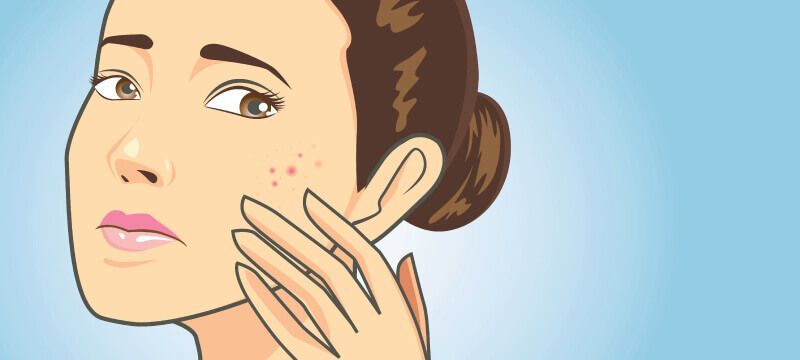Clogged Pores: Causes, Prevention and Treatments

Clogged pores are a very common skin condition. Left untreated, clogged pores often lead to acne and skin inflammation. Aesthetically, they also appear overly large which is a common concern of patients. Here’s a rundown on clogged pores including common causes, preventative measures, and simple treatment options.
What Are Clogged Pores?
Pores are small ducts in the skin through which oil and sweat are released. Dead skin cells and dirt often mix with the skin’s natural oils, becoming trapped inside pores and clogging them.
What Issues Do Clogged Pores Cause?
The most common issue resulting from clogged pores is acne. Acne is an inflammatory response to the buildup of dead skin cells, oil and bacteria inside pores.
- Blackheads result when debris trapped in pores oxidizes and turns black.
- Whiteheads form when clogged pores inflame and create a white bump.
- Pimples and cysts form when bacteria get trapped inside pores, leading to inflammation.
Clogged pores aren’t the same as enlarged pores, but when pores are clogged, they may appear larger or more visible to the naked eye.
What Causes Pores To Become Clogged?
The likelihood that you’ll have clogged pores is largely based on genetics. Large pores, a family history of acne, oily skin or very dry skin all make you more likely to have clogged pores.
Outside of age and genetics, there are some factors which can make clogged pores more likely to occur, even if not they are not the direct cause.
- Hats, glasses or accessories that trap debris against the face
- Heavy make-up, especially if left on overnight
- Thick sunscreens, moisturizers, creams and lotions
- Humid air that holds moisture against the skin
- Clothing that traps sweat against the skin
- A polluted environment
- Frequently touching your face
- Scrubbing too hard when washing
- Overuse of drying products
- Applying oils directly to the face
Clogged pores may also be more common during adolescence or pregnancy when hormones trigger the skin to produce more oil.
Where Can Clogged Pores Occur?
People are typically most concerned about clogged pores on the face. But clogged pores can occur anywhere on the body.
Anywhere a hair follicle or pore exists, there is the potential for it to become clogged.
How To Prevent Clogged Pores
Keeping skin clean and well moisturized is the best way to prevent clogged pores. In addition, the following tips can help:
- Wash skin daily with a gentle cleanser
- Keep skin well moisturized
- Select makeup and other products marked as non-comedogenic, non-pore clogging or oil-free
- Don’t use oil on your face or body where pores tend to get clogged
- Exfoliate once or twice weekly
- Avoid touching your face as much as possible
- Never pop or pick at pimples
In the battle against oily skin, overusing products that cause too much dryness can actually trigger more oil production. A balanced skin-care routine is best.
How To Help Clear Clogged Pores
The following methods can help clear pores that have become clogged. They also work well as preventatives as part of a regular skin care routine.
Exfoliation
Both chemical and manual exfoliation can help clear away dead skin cells, so they aren’t as likely to build up and clog pores. Exfoliation can also help unclog debris that’s already trapped.
Chemical exfoliation is done with AHAs or BHAs such as glycolic acid, salicylic acid or retinoids. These products also decrease oil production, dissolve trapped debris, and boost collagen to help minimize the appearance of pores. Some can cause skin irritation or dryness, so it’s best to introduce these products slowly and not overdo it.
Manual exfoliation refers to gently scrubbing with a textured brush or cloth. Exfoliating just once or twice weekly can help unclog pores without irritating skin.
Pore Strips
Pore strips contain an adhesive which helps remove debris from clogged pores. Use them as directed, and no more than once per week. Clean your skin immediately afterwards using a gentle, oil-free cleanser. Follow with a non-comedogenic moisturizer.
Face Masks
Face masks with clay or activated charcoal as their primary ingredient can be effective for unclogging pores. Some dry then get peeled away, while others are removed by washing. As with pore strips, cleanse your face after using the mask, then follow with toner and moisturizer.
Professional Extraction
Extraction is best left to the professionals, as doing it at home can lead to scarring and bacterial infection, making breakouts worse. Professional extraction minimizes the appearance of pores and prevents breakouts. It can also help prevent future pore clogging.
